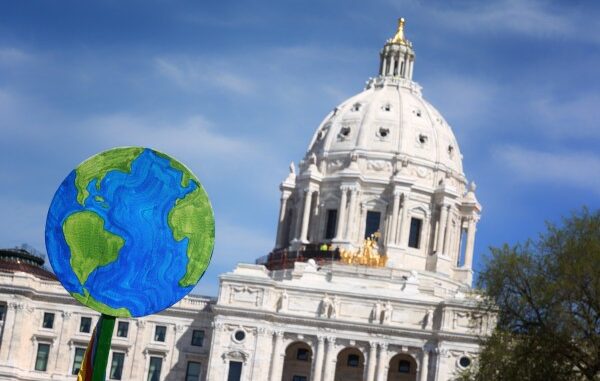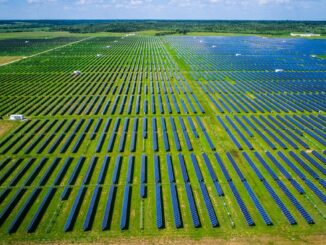
The Minnesota Pollution Control Agency plans to use a federal grant to help make sure the state’s climate strategies will benefit lower-income communities.
The Climate Pollution Reduction Grants program is a $5 billion federal program under the Inflation Reduction Act. It provides states and metro areas with funding to draft, update or evaluate climate action plans, as well as access to competitive grants for implementing elements of those plans.
Minnesota has been planning for climate change longer than most states. In 2007, the legislature adopted a goal of reducing greenhouse gases by 80% between 2005 and 2050. In recent years, the administration of Gov. Tim Walz has developed a plan called the Minnesota Climate Action Framework that includes strategies for achieving that goal and other targets.
Since then, Minnesota’s overall carbon emissions have declined 23%, and regulators reported in February that the state is on pace to hit an interim goal of reducing emissions by 30% by 2025. Questions and challenges remain, though, as power plant emissions fall and transportation, agriculture, forestry and land use account for a larger share of emissions.
“The funds are an opportunity for us to do some additional engagement and analysis that will help us build on that core framework and explore opportunities beyond what we’ve already put together,” said Amanda Jarrett Smith, climate unit supervisor for the Pollution Control Agency.
Get connected
Every morning, thousands of energy professionals turn to our newsletters for the day’s most important news. Sign up for free to get the latest delivered straight to your inbox.
The $3 million planning grant will help bolster the state’s climate plans in a few key areas, including a study of the potential impact of emission reductions in disadvantaged communities, which will support the Biden administration’s Justice 40 Initiative. The initiative requires 40% of the benefits accrue to those same communities.
The agency will share $300,000 of the grant with tribal nations for outreach and planning. Another portion of the money will be used to analyze workforce needs and the costs and benefits of climate solutions, with a focus on equity, Smith said.
The pollution control agency and the Minnesota Department of Health will conduct the analysis of benefits to low-income and disadvantaged communities using quantitative and qualitative elements, said David Bael, environmental economic analyst at the Pollution Control Agency. A spatial analysis will assess the health benefits of climate actions within government-defined areas considered low-income and disadvantaged.
The benefits could include improved respiratory and cardiovascular health from a reduction of co-pollutants such as fine particles, nitrogen oxides, sulfur dioxide and volatile organic compounds, he said. The agency will identify areas using the MPCA’s Environmental Justice Areas of Concern Screening Tool and the Council on Environmental Quality’s Climate and Economic Justice Screening Tool.
Bael said the qualitative benefits analysis will implement a “health impact assessment” focused on low-income and disadvantaged communities. The process uses a comprehensive approach to health including economic, political, social, psychological, and environmental factors. The impact assessment involves stakeholder engagement “to ensure that the results of the assessment reflect community needs and knowledge,” he said.
Minnesota is well positioned to make the most of the federal money because of the climate planning it has already done in recent years, said Trevor Drake, interim vice president of the Energy Systems program at the Great Plains Institute, which recently convened a group of government leaders in Chicago to support states participating in the EPA climate pollution grant program. While some states will use the money to draft a climate plan, Minnesota will use its share to build on work that’s already been done. The state also recently restructured a state agency to capitalize on the Inflation Reduction Act.
“States like Minnesota that had done a lot of work on this can let those Climate Pollution Reduction Grant funds go even further because they’ve already done some of the work to comply with EPA requirements for those funds,” Drake said.
The federal money will supplement state funding by the Minnesota Legislature, which agreed this session to spend around $500 million on dozens of climate and clean energy programs, including a $100 million grant program to help communities with climate adaptation planning.
Clean energy and environmental advocates say the urgency to reduce emissions is even greater because Minnesota’s climate is changing faster than almost any other state.
Smith said communities, especially smaller ones, will need more technical support for climate plans. Money for that activity could also come from a $5 million climate action grant planning program the Legislature approved for the agency this year.
“We have a good foundation with the framework in place,” Smith said. “It’s exciting to have all this funding coming our way.”



